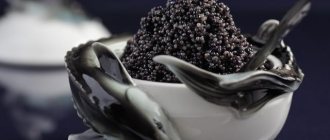Chemical composition
The composition of watermelon is 91% water, and the remaining percentages are amino acids, carbohydrates, pectin, ash, and alkaline substances.
Minerals in the composition:
- calcium;
- potassium;
- magnesium;
- sodium;
- phosphorus;
- selenium;
- copper;
- manganese;
- iron;
- fluorine;
- zinc.
Watermelons contain lycopene, beta-carotene, B vitamins (thiamine, riboflavin, folate, pyridoxine, choline), ascorbic and nicotinic acids, alpha-tocopherol acetate (vitamin E), phylloquinone (vitamin K), betaine.
KBZHU watermelon
Watermelon has a low calorie content - only 30 kcal per 100 grams of pulp, and it is also low in fat.
Contents per serving (100 g) of watermelon:
- proteins - 0.6 g;
- fat - 0.2 g;
- carbohydrates - 7.2 g.
BJU of watermelon per 1 kg : calorie content of fruit pulp - 300 kcal, proteins - 6 g, fats - 2 g, carbohydrates - 72 g.
Is it possible to eat berries as a product for weight loss?
It is difficult to think of a more pleasant and simple way to lose weight than the watermelon diet. Many world nutritionists recommend using watermelon for weight loss due to a number of its beneficial properties:
- removes excess fluid from the body;
- removes swelling;
- cleanses the intestines of toxins and toxic substances;
- improves digestion;
- activates metabolism;
- normalizes water-salt balance;
- contains an enzyme that breaks down fats and lowers blood sugar levels;
- has a laxative effect;
- improves intestinal motility.
Fruit pulp quickly fills you up with a low calorie content, which allows you to reduce portion sizes and avoid snacking. Regular consumption of watermelon increases endurance and performance, which stimulates physical activity and additional calorie burning.
Experts advise anyone who intends to lose weight on a watermelon diet to buy fresh and high-quality fruits only during the season: early August - late September. If you purchase them ahead of time, there is a high probability of getting a product with nitrates.
For reference. You can determine the ripeness and quality of a watermelon by external signs. The fruit should be large, weighing 6-10 kg, without cuts or cracks, have a small yellow earthen spot on the side, a dry stalk, a shiny top layer without a matte coating, and a clear striped pattern. When squeezed it cracks and when tapped it makes a booming sound.
How many calories are in watermelon and can you eat it on a weight loss diet?
Watermelon has been known since the times of Ancient Egypt, because the cultivation of the crop was in full swing. The melon crop was used not only as food, but also as a cosmetic product.
To this day, it remains a mystery what it is - a fruit of the pumpkin family or a giant berry, the weight of which reaches several kg. Scientists claim that watermelons were left in the tombs of the pharaohs so that they would eat them while in the afterlife.
The watermelon appeared in South Africa, where it is still found growing in the wild.
Europeans tasted the delicacy during the Crusades; for Russia, this plant was a rare sight on tables until the 19th century.
Calorie content per 100 grams
It is not known exactly how many calories are in 100 grams of watermelon, because... the exact number depends on the volume of the fruit, but on average it is 25-35 kcal per 100 grams of product. It is important to know not only how high-calorie watermelon is, but also the composition of the BZHU:
- How many proteins? 0.6 grams.
- How many carbohydrates? 8 grams;
- How much fat? 0.2 grams;
- How much cholesterol? 0 grams;
You will find it useful: food calorie table
Diet and watermelon
There is an opinion that watermelon is suitable for a diet, but this is not entirely true.
Despite the willpower, when you consume only watermelon during the day, as well as the strong feeling of hunger that the product causes, insulin will begin to be produced, which will reduce glucose levels.
The feeling of hunger will therefore increase, and it will not be easy to cope with such a diet, because the glycemic index is high, and the composition of the fruit is simple, but not high in calories.
Watermelon can be used for weight loss, but there may be some difficulties associated with a sense of proportion. On average, 1.5-2 kg per day is acceptable for the average person.
Compound
The valuable properties of watermelon are manifested in their beneficial effects on the digestive organs, heart and blood vessels. The delicate dietary fiber included in the composition (0.5%) removes cholesterol and toxins. People who are losing weight calculate their nutritional intake (the amount of proteins, fats and carbohydrates based on a certain body weight) and be sure to include watermelon in their diet.
Despite the glycemic index, the abundance of the following components makes the composition of watermelon unique and healthy:
- Calcium;
- Potassium;
- Magnesium;
- Folic acid;
- Carotene;
- WITH;
- RR;
- AT 2;
- IN 1.
The combination of salty foods and watermelon puts additional stress on a weakened heart, and also causes swelling, because a large amount of fluid is retained due to salt in the body. Doctors do not recommend simultaneous consumption of nuts, crackers, salted fish and other things with watermelon.
Selection rules
Buying a watermelon is a very important aspect, since it determines whether it will be harmful or whether the product will be beneficial. Rules for choosing a good watermelon:
- A slice of watermelon is immersed in water. If nitrates are present, the liquid will turn pink or red. If absent, it will only muddy it;
- The fruit needs to be squeezed. There is no crackling, but it looks mature? Indicates chemical additives;
- When cut, a watermelon does not have a perfectly smooth surface; the pulp contains sugar grains and whitish-pinkish thin veins.
Permissible rate of nitrates: 60 mg per 1 kg of fruit. The accumulation occurs unevenly, and to avoid possible ingestion of toxins into the body, it is not recommended to take very large fruits. The average fruit weight does not exceed 8 kg, although it depends on the variety.
It is advisable to give children only the core, it is healthier and tastier.
Fruit jelly in watermelon rinds
- Fruit and berry powdered jelly – packaging;
- Bitter chocolate – 100 grams;
- Watermelon (a couple of kg).
Take a small fruit, cut it in half, remove the pulp. You can use the method of making jelly from the juice and pulp of watermelon and gelatin.
The jelly is poured into the empty crusts in stages, with chocolate chips sprinkled between the layers. When filling the crust, after each layer, put it in a cold place; when the half is filled, the dessert is ready. Divide into slices and serve to the table. The taste and benefits of the dessert will delight your guests and loved ones.
Watermelon bunch
- Half a glass of water;
- Starch – 50 grams;
- Wheat flour – 50 grams;
- Two egg whites;
- One watermelon;
- Powdered sugar for decoration.
Cut the watermelon, use a special vegetable knife to cut out balls of any size. Dilute the starch in water, beat the egg whites in a separate form, and combine with the starch. Dip each ball in flour, and then in the mixture.
Deep fry, decorate generously with powdered sugar. Arrange in the form of a bunch of grapes.
THESE ARTICLES WILL HELP YOU LOSE WEIGHT
Your review of the article: ( 376 4.52 out of 5) Loading…
Glycemic index of watermelon
Watermelon has a high glycemic index - within 65-70 units , which is due to the presence of easily digestible carbohydrates. Despite the fact that foods with a high index cannot be consumed on a diet, watermelon is widely used for body shaping.
The berry contains a lot of water, and carbohydrates are represented by fructose and glucose, and only during storage of the fruit does harmful sugar accumulate in them.
This is interesting:
The benefits of watermelon juice and how to prepare it
Dangerous sugar: is it in watermelon?
Diuretic properties and rules for consuming watermelon
Beneficial properties of watermelon for the human body
Watermelon is a valuable food product that saturates the body with useful substances , provides prevention of a number of diseases, and relieves stress on the body. It is beneficial for the heart, blood vessels, gastrointestinal tract, nervous system, liver and kidneys.
The fruits contain high doses of B vitamins, citrulline, lycopene . The latter lowers cholesterol levels, limits the likelihood of cancer, delays skin aging, protects the body from oxidation, works for the benefit of the heart and blood vessels, and serves as a prevention of myocardial infarction and atherosclerosis.
Citrulline improves blood flow in muscles and their nutrition , maintains a positive nitrogen balance in the body, increases energy potential, and increases endurance. It also removes urea and uric acid from the body, which is important for people suffering from gout, rheumatic diseases or predisposed to them.
The fruits are beneficial in the treatment of liver and kidney pathologies due to their diuretic effect. This does not create additional stress on the kidneys, which helps avoid the occurrence of stones.
The fruits contain a lot of fiber, which improves intestinal function , removes toxins and excess water, and relieves constipation.
Watermelon has a beneficial effect on the nervous system : it improves mood, reduces the effects of stress, has a positive effect on metabolic processes in brain tissue, and increases mental performance.
Watermelon is good for vision , protects against flu, upper respiratory tract infections, neutralizes dangerous free radicals, and is necessary for the proper functioning of the immune system. Folic acid creates favorable conditions for the functioning of the digestive system. Calcium is necessary for normal growth and formation of bone tissue, mineralization of teeth, and prevention of osteoporosis.
For men
Regular consumption of moderate doses of watermelon prevents the occurrence or suppresses the activity of inflammatory phenomena and improves blood circulation in the prostate gland. Citrulline improves erectile function, lycopene protects against prostate cancer.
Although watermelon pulp contains zinc in small quantities , it will also benefit men's health. It is involved in the production of testosterone, the main male sex hormone that affects the development of bone and muscle tissue, responsible for sexual health and libido.
For women
Watermelon is also good for women. It contains vitamin A, which has a beneficial effect on the condition of the skin : it takes on a healthy appearance, uniform color, and fine wrinkles are smoothed out.
This vitamin slows down the aging process, participates in the formation of new cells and the production of steroid hormones, restores and maintains epithelial tissue, and accelerates the healing process for burns and wounds.
Pectin is also valuable for the female body . Its functions:
- absorbs fats and acids in the small intestine;
- reduces the content of harmful cholesterol in the blood;
- removes heavy metals, salts, radioactive substances;
- breaks down fat deposits;
- suppresses appetite.
For pregnant women, watermelon pulp is a source of vitamin B9 (folic acid) . Without folate, the growth and normal development of fetal tissues and organs is impossible. If during pregnancy the acid is supplied in insufficient quantities, then there is a high probability that the embryo will develop pathologies from the nervous system: cerebral hernia, hydrocephalus, absence of the brain.
Defects of the cardiovascular system are not excluded . In women, vitamin B9 deficiency is manifested by weakness, increased fatigue, headaches, and there is a risk of miscarriage, placental abruption, and stillbirth.
During this period, it is recommended to use fruit pulp as a diuretic to neutralize swelling: it cleanses the blood, liver, kidneys well, and removes excess fluid from the body.
During breastfeeding, watermelon will benefit the mother and baby, provided that the woman ate it during pregnancy and it did not cause any side effects. However, its use should be limited to a nursing mother for the first 2-3 months after the birth of the baby.
Important! You should not eat watermelon if your baby has colic. Frequent consumption of large portions can worsen the general condition of the child, causing increased gas formation, bloating, dyspepsia, and other problems with the digestive tract.
Watermelon - calorie content for weight loss, benefits and harm
For 10 whole months of the year we live in anticipation of the appearance on the shelves of a beautiful and unusual...
For 10 whole months of the year we live in anticipation of the appearance on the shelves of beautiful and unusually juicy berries grown on melons.
- For children and men, a dense green “ball” with black stripes and red flesh is an autumn delicacy.
- For the fair sex, the low calorie content of watermelon and the opportunity to try a new diet are more attractive.
Girls count the days until August so that they can enjoy the unique properties of melons and melons for 2 months. They have already read information about the benefits of watermelon for weight loss, it’s a dream to eat sweets and not gain weight!
But there are also opponents of watermelon addictions. In their opinion, the berry is not as wonderful as it seems...
Where is the truth? You will find it below - we openly reveal the calorie secrets so that your love for watermelon will only bring benefits!
Watermelon, is your low calorie intake a determining factor when losing weight?
“Meet watermelon (calorie content when losing weight is an important factor, and it corresponds to it)! You will quickly get rid of excess kilograms, saturate your body with microelements and normalize your metabolism. Eat as much as you can and flush out toxins and unnecessary fluids!
A watermelon weekly mono-diet will permanently remove up to 5 kg in 7 days if you follow the recommendations. Consume 1.5-2 kg of pulp per day, introduce black bread (no more than 200 g) into your diet. Get ready to exit the diet period correctly: give up sweets and buns. 10-14 days – minus 8 kg!”
All the highlighted information is a myth, a delusion of ignorant “nutritionists”. Your health will not thank you after such a mono-diet.
- You will “magically” begin to lose precious muscle mass at an accelerated rate;
- Fat burning will occur a hundred times slower;
- The body will become apathetic, strength and tone will be depleted.
We do not advocate the absolute uselessness of watermelon for losing weight - it is ideal as a means for fasting days! It is during the day that its benefit will be maximum.
You will object that it is impossible to achieve such a low calorie diet with other products. You are wrong! Let's take the average figure of 1000 kcal:
- This amount of watermelon will make you swell like a balloon, and we can confidently say that stomach discomfort will accompany you everywhere.
- Collect in your daily “basket”: an egg, porridge, vegetables and milk for the same calorie amount, and you will get 3 good servings for a full meal + a snack.
Do you like watermelons? Don't give up on them during the long-awaited period of late summer - autumn. One large piece a day is enough to get the most important minerals and vitamins, flavored with the pleasure of savoring!
The calorie content of watermelon is important, but let’s think about the benefits and harms of consuming it..
This section of the article will touch on several nuances, united in a chain: “ watermelon – calorie content – benefits and harm” so that all the i’s are dotted.
Benefit!
- Magnesium in watermelon is a heart helper and the best companion for the nervous system (for this, the berry is popularly called an antidepressant and a “pill” for mood). Due to magnesium, muscle function and good absorption of vitamins and minerals are activated.
- Folic acid from pulp is involved in the construction of DNA and the general development of the body.
Improved memory, clear thoughts and brain activity are found in a watermelon slice. - Watermelon is effective as a diuretic (in case of kidney failure, consultation with a doctor is required!).
- The berry is filled with “energy” vitamin substances.
- Due to its rapid absorption, watermelon juice is preferable to water during heatstroke and has amazing electrolyte capabilities. Feverish seizures and vomiting will also subside.
- Dietary fiber with its high amount prevents constipation. They also successfully fight high cholesterol.
- The lycopene in watermelon has been recognized as a good supportive option in the treatment of infertility in men.
- Cleansing the liver of toxins, the green berry is ideal for recovery after long-term use of antibiotics.
- Brewed watermelon seeds have an anthelmintic effect.
- In skincare cosmetology, scarlet juice is used in tonic masks, the purpose of which is to refresh the face and even out skin tone.
The list of benefits of watermelon can be continued with a positive “contribution” in the treatment of: gout and gallbladder, atherosclerosis and anemia, gastritis and obesity, Botkin’s disease and heart defects, hypertension and nosebleeds...
Harm!
Let's start with the patterns - consuming “bad”, nitrate watermelon will negatively affect you. Chemicals in fertilizers, saltpeter injected into the pulp with a syringe through the peel - all this gives an impetus to the rapid ripening of fruits. For humans, an increased level of harmful substances is destructive - frequent poisonings in early August only confirm this.
Expect quality watermelons from melons no earlier than mid-August. Don’t rush for the “early” fruits that lure bored customers to the shelves!
Let's move on to the advice of scientific medicine, which is against the abuse of juicy pulp by people suffering from blood pressure and heart spasms.
This is due to fructose - it causes “trouble” in the digestive tract, causing bloating and gas formation. Internal pressure changes critically, problems can spread to heart rhythm.
If you don’t want to deny yourself the pleasure of watermelon, go to your doctor...
The ban on drinking watermelon applies to:
- Exacerbations of colitis and diarrhea;
- Difficulty in the outflow of urine (the doctor may give permission in individual cases);
- Pyelonephritis (specialist advice is also necessary);
- Kidney stones (watermelon can begin to dislodge large stones);
- Diabetes mellitus (in rare cases, the treat is available in very small portions);
- Problems with the prostate and pancreas;
- Infancy (up to 3 years) – the origin of the watermelon and confidence in its quality (the absence of chemical “pumps”) are important here. Try introducing the baby by starting with small portions (70-150 g/day).
***
Application for weight loss
Due to its taste and availability, watermelon has gained a large number of fans around the world as a means of losing weight. Rave reviews from girls and women who have painlessly lost several extra pounds confirm the effectiveness of the watermelon diet. If you get out of it correctly and then follow the principles of a healthy diet, you can consolidate the results for a long time.
In order to cleanse the body and correct body weight, fasting days are spent on fruit pulp, which involves drinking watermelons and water in an amount of 2-3 liters. Despite the fact that the berry itself is juicy, free liquid is necessary to normalize the water-salt balance and to activate the process of removing waste and toxins from the body resulting from the decomposition of fatty deposits.
One- and two-day fasting diets are usually . Their frequency varies widely, but the most optimal frequency of fasting days is once every 7-10 days.
A more strict version of the diet is designed for five days and includes only permitted watermelon pulp in the amount of 1 kg per 10 kg of body weight + 2 liters of still purified water. This option for losing weight is unbalanced; the body experiences a deficiency of calories and other essential micro- and macroelements, vitamins, and is difficult to tolerate.
Negative consequences are possible in the form of rapid weight restoration and slower metabolism. Only people who do not have gastrointestinal diseases can practice this method of weight loss.
It is more rational to carry out a ten-day gentle watermelon diet , in the menu of which the pulp of fresh ripe watermelons is supplemented with water and unsweetened green tea, whole grain, rye or bran bread. The maximum result that can be achieved is minus 10 kg. The average figures vary between 5-7 kg.
During the diet, pasta, alcohol, energy drinks, bread, sugar-containing foods, snacks, and snacks are completely excluded . To consolidate the results, it is important to consume low-calorie dairy products, cheese, lean salads and vegetable soups, lean meats and fish for a few more weeks after completing the diet.
Afterwards, watermelon pulp is included in the diet at the rate of 1 kg per 30 kg of human body weight.
Calorie content of watermelon - how many calories, nutritional value
Watermelon is a herbaceous annual plant belonging to the pumpkin family, with oval, spherical, flattened pumpkin fruits.
Watermelon fruits acquire different peel colors; ripe pulp acquires a red, pink or crimson hue, and in rare cases, white or yellow. Morphologically, watermelon is similar to a berry.
In addition to its bright taste properties, watermelon has a number of pharmacological properties. Due to the low calorie content of watermelon, the fruit can be consumed for health and figure benefits.
The calorie content of watermelon is up to 35 calories per 100 g of ripe fruit pulp, which allows you to consume watermelon in unlimited quantities.
Calorie content of watermelon: nutritional and energy value of the fruit
The calorie content of watermelon turns its fruit into a healthy dietary product that can not only help significantly reduce weight, but also normalize many body functions.
Thus, watermelon pulp has choleretic, diuretic, antipyretic, anti-inflammatory, and tonic properties. Eating watermelon normalizes metabolic processes in the body and enhances intestinal motility.
Watermelon has a mild laxative effect, removing waste and toxins from the body, and also promotes the gentle removal of fecal deposits from the intestines.
With its low calorie content, watermelon is a source of soft dietary fiber - fiber, which, without providing the body with energy, plays a big role in its life. Fiber helps slow down the absorption of carbohydrates, fats, and proteins, helping to keep the body full for longer after eating.
With the low calorie content of watermelon, the fruits are a source of useful micro- and macroelements and vitamins for the body. 100 g of watermelon pulp contains about 10% easily digestible sugars (fructose, glucose, sucrose).
The pulp of a ripe watermelon also contains pectin substances (physiologically active substances that have a number of beneficial properties for the body), proteins, calcium, magnesium, potassium, sodium, and iron in its organic form. Watermelon is a source of vitamins: niacin, riboflavin, folic acid, ascorbic acid, thiamine.
Watermelon seeds also have beneficial properties, which are often thrown away when the pulp is consumed. However, they contain up to 25% fatty oils, as well as linolenic, linoleic, and palmitic acids.
With a low calorie content of watermelon, its pulp is enriched with lycopene, a carotenoid pigment that determines the color of the fruit pulp.
This carotenoid has a powerful antioxidant effect, leads to a decrease in oxidative stress, which, in turn, slows down the processes of atherosclerotic changes in the body, provides DNA protection, helping to prevent oncogenesis (the formation of malignant and benign tumors).
Lycopene reduces the risk of developing cardiovascular diseases, eye diseases, and inflammatory processes in the body. The recommended intake of lycopene per day for humans is up to 5 mg. 1 kg of watermelon pulp contains up to 25 mg of lycopene.
How many calories are in watermelon: an effective watermelon diet
The low calorie content of watermelon, along with its beneficial properties, turns this fruit into a unique dietary product. An effective watermelon diet allows you not only to lose weight, but also to cleanse the body of waste and toxins, as well as restore the balance of macro- and microelements, and receive a powerful vitamin boost.
The low calorie content of watermelon allows you to lose weight by eating deliciously and without limiting the amount of delicious fruit.
There are several types of low-calorie, effective watermelon diets. Nutritionists recommend having watermelon fasting days in the summer.
During the fasting day, only watermelon pulp is consumed, all drinks except purified water are excluded from the diet. The watermelon fruit consists of 90% water, so, as a rule, watermelon relief is an excellent thirst quencher.
The efficiency of unloading on watermelon is low. The weight comes off gradually when a person returns to a normal diet.
Due to its low calorie content, watermelon can complement any diet as a healthy treat, thereby reducing physical and psychological stress on the body when the supply of nutrients from food is limited.
A longer watermelon diet is a special diet lasting up to 7 days. Throughout the diet, the diet allows unlimited consumption of watermelon. You can complement each meal with black or whole grain bread.
For lunch with this diet, boiled lean meat (preferably poultry), stewed vegetables, and whole grain bread are recommended. Porridge is allowed as a side dish.
The watermelon diet excludes fermented milk products to avoid the development of diarrhea and recommends low-fat yoghurts when leaving the diet to restore the intestinal microflora after cleansing the soft fiber of the watermelon pulp.
Watermelon pulp, which contains virtually no calories, is also used in the preparation of various salads, desserts, and drinks.
Regardless of how many calories are in watermelon, the pulp of this fruit can be consumed without restrictions.
However, it should be noted that watermelon diets are not recommended for patients suffering from diabetes mellitus, kidney stones, complicated diseases of the pancreas, prostate gland, or pyelonephritis.
With its low calorie content, watermelon also poses a certain threat to the body. For rapid ripening, watermelons are treated with nitrates, which accumulate in watermelon rinds and pulp.
Once in the body, nitrates are converted into nitrites (elements that destroy hemoglobin in the blood) and nitrosamines (highly toxic compounds that damage the liver, causing bleeding, convulsions, and coma). Nitrosamines have a powerful carcinogenic effect; when a significant dose enters the body, the compound exhibits mutagenic properties.
Despite the low calorie content of watermelon, its taste and high content of nutrients, the fruit must be selected with extreme caution. The best period for consuming watermelons and following the watermelon diet is the end of August and the beginning of September. It is by this period that the fruits have time to ripen without fertilizers and chemicals.
Useful properties of watermelon: calories and vitamins
Watermelon is a useful product that allows you to imitate quick saturation of the body. Watermelon pulp, which has very limited calories, is rich in vitamins PP, beta-carotene, B1, B2, B6, B9, C, E, many of which are not synthesized in the body.
The unique properties of watermelon, which contains virtually no calories (up to 35 calories per 100 g of pulp), are also explained by the fact that the body needs to expend more energy on digesting watermelon and excreting digestive products than is supplied to the body with a portion of the fruit pulp.
The calorie content of watermelon can be neglected when calculating the daily calorie intake when following various diets.
How many calories are in watermelon and can you eat it on a weight loss diet?
Watermelon has been known since the times of Ancient Egypt, because the cultivation of the crop was in full swing. The melon crop was used not only as food, but also as a cosmetic product.
To this day, it remains a mystery what it is - a fruit of the pumpkin family or a giant berry, the weight of which reaches several kg. Scientists claim that watermelons were left in the tombs of the pharaohs so that they would eat them while in the afterlife.
The watermelon appeared in South Africa, where it is still found growing in the wild.
Europeans tasted the delicacy during the Crusades; for Russia, this plant was a rare sight on tables until the 19th century.
Benefits and harms
An important question: can you eat watermelon while on a weight loss diet? Yes, sure!
The beneficial properties of a representative of the pumpkin family, or false berry, as is commonly believed, lie in the richness of microelements, vitamins and other useful substances. Among them, lycopene is a substance belonging to the group of antioxidants.
- Due to its lycopene content, watermelon helps in the fight against male infertility.
The product is also good for weight loss - the calorie content of watermelon helps you not to gain excess body weight, but to enjoy the taste with benefits for the body. The glycemic index is high, but at the same time, the plant has a beneficial composition. Nature has endowed it with choleretic and diuretic properties, which helps to carefully cleanse the body.
Taking watermelon juice and absorbing the pulp is useful for those who need to reduce “bad” cholesterol. Prevention of cardiovascular diseases, including atherosclerosis and anemia, is carried out thanks to the fiber that the fruit contains. Cleansing the kidneys and liver of toxins allows the body to improve performance and also has a beneficial effect on other organs.
To remove sand from the kidneys, you should consume 2 kg of pulp and juice on an empty stomach for five days, preferably in two doses. The juice and pulp help with weight loss. The glycemic index promotes consumption not only for breakfast, but also for dinner. However, we must not forget about the measure, because if it increases, a negative reaction will occur.
Patients suffering from gout and anemia have the opportunity to consume watermelon regularly without fear for their health.
Watermelon juice helps cope with the following diseases:
- Jade;
- Urolithiasis;
- Cystitis;
- Gallstone disease;
- In case of poisoning;
- Cirrhosis;
- Jaundice;
- Kidney diseases.
In addition, hypertensive patients and people experiencing joint pain, and those who want to get rid of excess fluid in the body and cleanse the gallbladder, can take watermelon juice in between meals. Doctors do not give recommendations on dosage, because the energy value of watermelon is low, it does not cause harm, except for personal intolerance to the product, and the benefits are great.
Watermelon does not harm the body, but we must not forget that even despite the 95% composition of the liquid, the glycemic index is high and equal to 95 - this means that a feeling of hunger will soon arise.
The glycemic index, beneficial composition, and low calorie content of watermelon make it possible to use fasting days, each of which accounts for 1.5-2 kilograms of fruit, green tea and mineral water without gases. The properties of the product will provide a competent approach to improving your well-being.
When breastfeeding
The fruit is useful for nursing mothers, helps get rid of anemia without harm to health, and produce milk for the baby. Consumption is possible only from the 3rd month of breastfeeding, because
it has properties that may not have the best effect on the baby’s digestion.
The first day, which includes the young mother eating watermelon, is limited only to this innovation; other foods unfamiliar to the child should be temporarily forgotten for five days in order to identify possible negative consequences in time.
The harm to the product, like other crops belonging to the melon family, lies in the possibility of accumulation of chemicals used by unscrupulous farmers. It is better to give preference to those sellers who do not use “chemicals” and have been known for a long time.
Advice: to identify harmful substances, you should cut it and take a closer look at the pulp. The yellow color of the threads or seals indicate the presence of nitrates, which means there may be unpleasant consequences:
The safe period for purchasing watermelon is mid-August.
Contraindications
The plant causes harm to the body of those who have diabetes or problems with the spleen. Cellulose, which is digested in the body for a long period of time, is harmful to people suffering from typhus. For them, it is preferable to drink juice rather than consume pulp, because the properties impair the functioning of the weak digestive organ.
Possible harm and contraindications
Watermelon tends to accumulate nitrates in the fruit. Their excess is toxic to the human body, negatively affects the condition and functionality of the digestive organs, provokes hypoxia and, worst of all, increases the risk of cancer.
Eating fruits against the background of diarrhea can lead to disruption of the water-salt balance , dehydration of the body, and calcium leaching, which will negatively affect the condition of the musculoskeletal system and the strength of bone tissue.
Due to its pronounced diuretic effect, watermelon should be consumed with caution if large salt stones are detected in parts of the urinary system (liver, kidneys, ureter, urethra). There is a possibility that the increased outflow of urine can dislodge stones and disrupt urodynamics, causing pain, blockage of the urinary tract, and kidney dysfunction.
Contraindications to consuming large portions of watermelon pulp are relevant in the presence of diseases and pathological conditions such as:
- allergy to the product;
- diarrhea;
- stones of the ureter, urethra in the kidneys, liver;
- increased acidity of gastric juice;
- diabetes mellitus type 2 and 3;
- gastrointestinal diseases of an erosive-ulcerative nature, especially in the acute stage.










